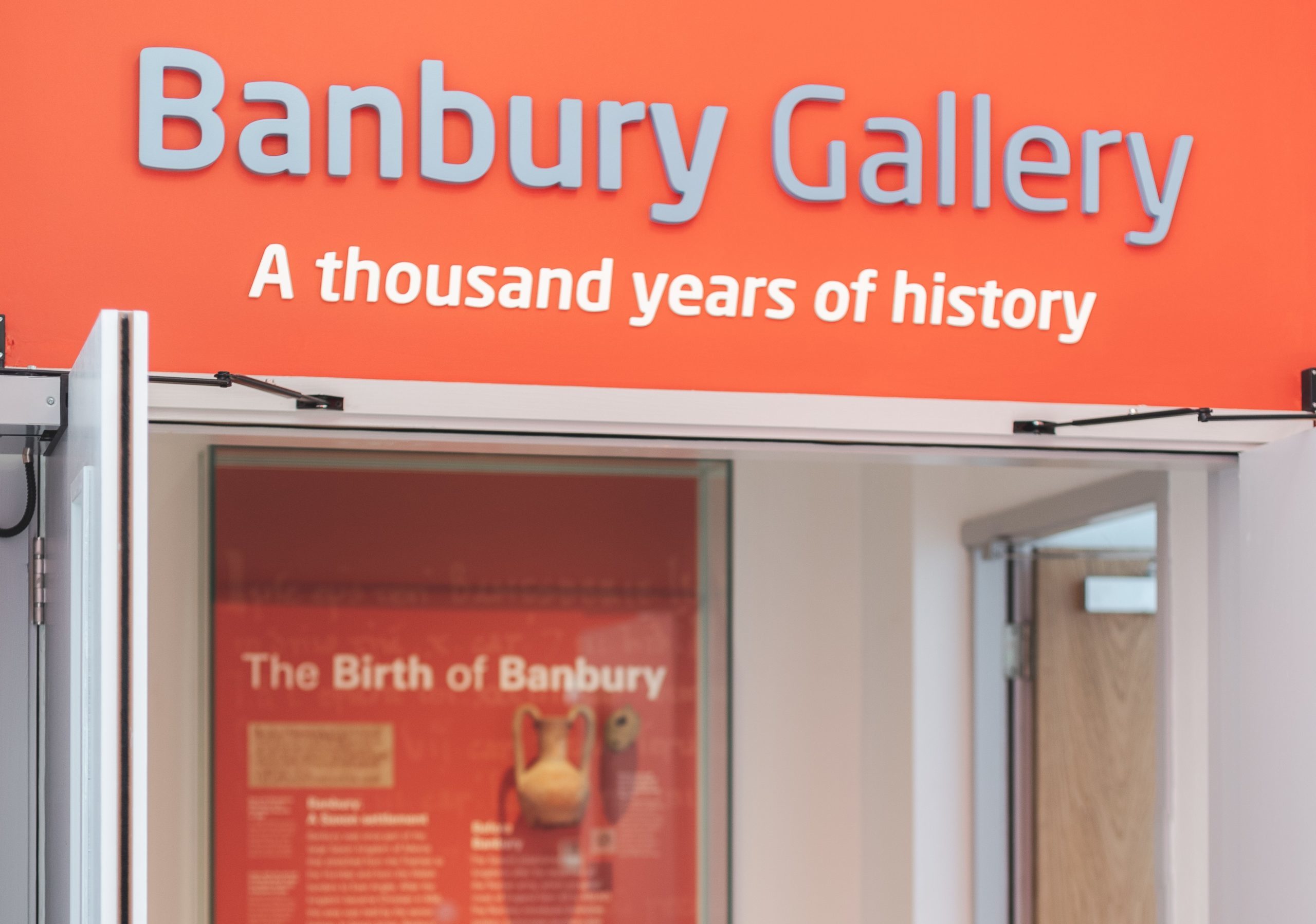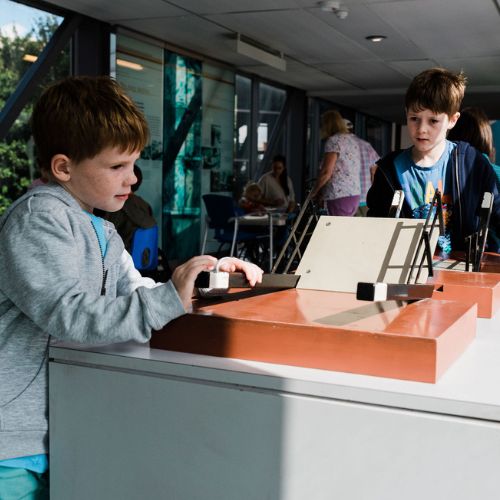Banbury Museum & Gallery has two galleries that tell the story of Banbury and are free to enter.
Banbury Gallery
Banbury has a long history, founded by the Saxons over 1000 years ago. It has played a significant role in many of our national stories, including the English Civil War of the 1640s, and the two world wars.
The Banbury Gallery on the first floor of the Museum, holds objects and artefacts that illustrate everyday life and Banbury’s commercial past. Collections include bronze age material found near Banbury and jewellery owned by our Saxon ancestors, a canon from Banbury Castle, fine plush cloth made in the 1700s, locally manufactured tools and costumes spanning over 200 years

Don’t miss

Anglo Saxon Era Brooch
Made in early 500AD, and found in Hornton, near Banbury, this women’s square headed brooch in gilded bronze would have served a practical function but also demonstrated great status and wealth for its owner.

Constables’ Truncheons
Banbury’s police force was set up in 1836. These truncheons used by local constables are both a symbol of power and a weapon to keep the peace.

Wardington Carriers Cart
With 200 carts travelling in and out of Banbury each week, the carriers cart is a symbol of Banbury’s place as a busy Victorian Market town.

Alcan Mural
The Aluminium fabricators, Alcan played a pivotal role in Banbury’s 20th Century history, including making aircraft parts for The Battle of Britain. This mural from 1957 hung in entrance to the Banbury Laboratories and shows the company’s many activities at the time.
The Waterways Gallery
The Waterways Gallery straddles the canal and connects the Museum shop and welcome centre in Castle Quay and the main Museum building. It helps tell the story of the people who lived and worked on the Oxford Canal and the importance of the waterways to Banbury’s past.
The Waterways Gallery is the focus of an ongoing development project to deliver a new gallery that will illustrate this remarkable feature that stretches from Coventry to Oxford, connecting the Midlands with London.

